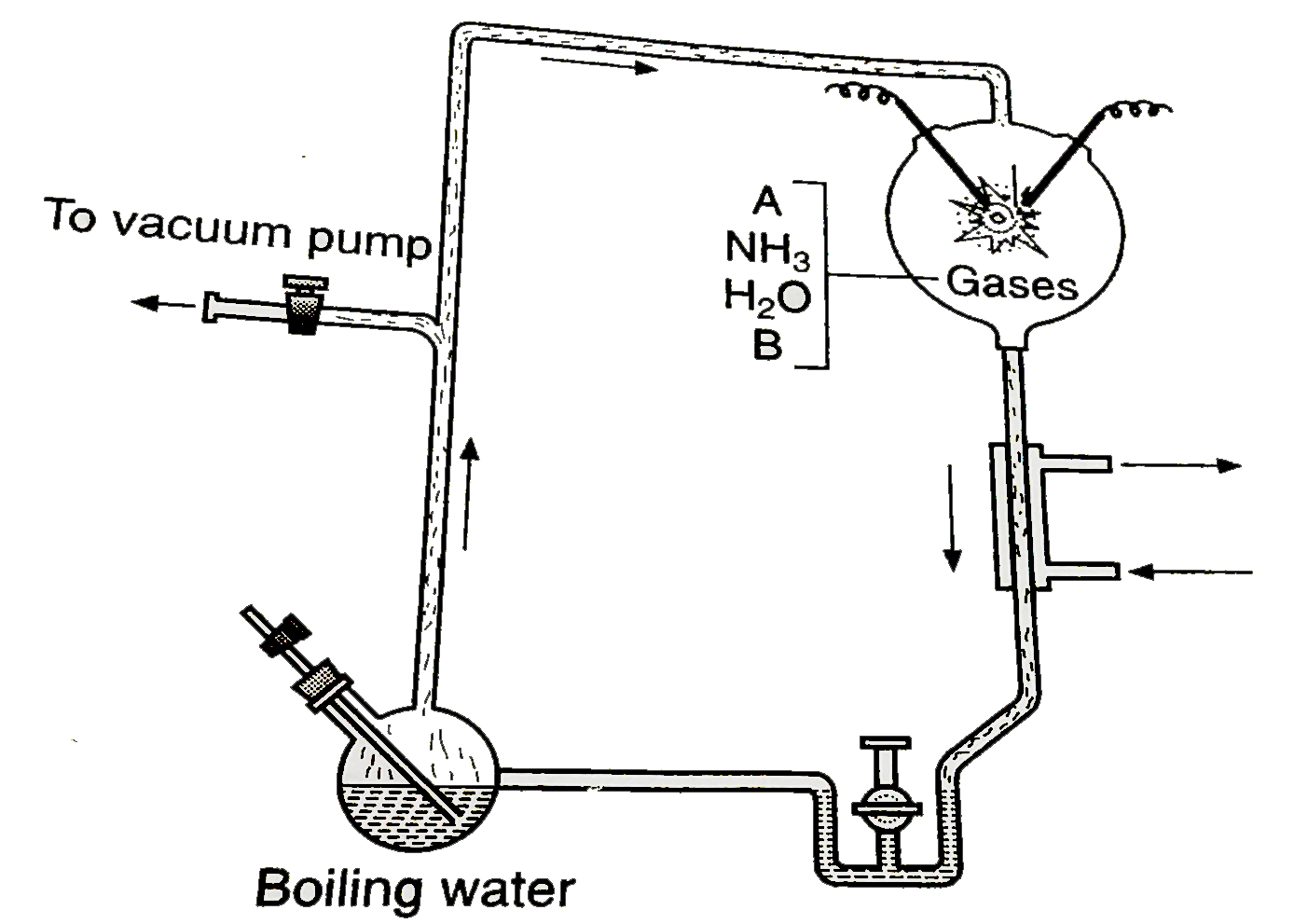Mention the contribution of S.L. Miller's experiments on Origin of Life
Step-by-Step Text Solution:
1. Introduction to the Theory of Origin of Life:
- The theory of the origin of life was proposed by scientists Alexander Oparin and J.B.S. Haldane. They suggested that life on Earth originated from simple inorganic compounds through a series of chemical reactions.
2. S.L. Miller's Experiment:
- In 1953, Stanley Miller conducted a groundbreaking experiment to test the hypothesis put forth by Oparin and Haldane. He aimed to simulate the conditions of the early Earth to observe if organic compounds could be formed from inorganic precursors.
3. Setup of the Experiment:
- Miller created an apparatus that included a closed system with water, which represented the oceans, and a mixture of gases that were believed to be present in the early atmosphere, such as methane (CH₄), ammonia (NH₃), and hydrogen (H₂).
- He heated the water to produce water vapor, which then mixed with the gases.
4. Simulating Lightning:
- To simulate the lightning strikes that would have occurred on the primitive Earth, Miller introduced electrical sparks into the mixture. This was intended to provide the energy needed for chemical reactions to take place.
5. Cooling and Collection:
- After the electrical sparks, the mixture was cooled, allowing the products of the reactions to condense and collect in a separate flask.
6. Analysis of Results:
- After one week of running the experiment, Miller analyzed the contents of the flask and discovered that several organic compounds had formed, including 13 different amino acids, as well as purines and pyrimidines, which are essential components of nucleic acids (DNA and RNA).
7. Conclusion:
- Miller's experiment provided significant evidence supporting the theory that organic molecules could be synthesized from inorganic compounds under conditions similar to those of early Earth. This contributed to our understanding of the origin of life, validating the ideas proposed by Oparin and Haldane.
---
- The theory of the origin of life was proposed by scientists Alexander Oparin and J.B.S. Haldane. They suggested that life on Earth originated from simple inorganic compounds through a series of chemical reactions.
- In 1953, Stanley Miller conducted a groundbreaking experiment to test the hypothesis put forth by Oparin and Haldane. He aimed to simulate the conditions of the early Earth to observe if organic compounds could be formed from inorganic precursors.
- Miller created an apparatus that included a closed system with water, which represented the oceans, and a mixture of gases that were believed to be present in the early atmosphere, such as methane (CH₄), ammonia (NH₃), and hydrogen (H₂).
- He heated the water to produce water vapor, which then mixed with the gases.
- To simulate the lightning strikes that would have occurred on the primitive Earth, Miller introduced electrical sparks into the mixture. This was intended to provide the energy needed for chemical reactions to take place.
- After the electrical sparks, the mixture was cooled, allowing the products of the reactions to condense and collect in a separate flask.
- After one week of running the experiment, Miller analyzed the contents of the flask and discovered that several organic compounds had formed, including 13 different amino acids, as well as purines and pyrimidines, which are essential components of nucleic acids (DNA and RNA).
- Miller's experiment provided significant evidence supporting the theory that organic molecules could be synthesized from inorganic compounds under conditions similar to those of early Earth. This contributed to our understanding of the origin of life, validating the ideas proposed by Oparin and Haldane.
Topper's Solved these Questions
- EVOLUTIONBOOK - PRADEEPCHAPTER - EVOLUTIONEXERCISE - ADDITIONAL QUESTIONS (Long Answer Questions)
69 Videos
- EVOLUTIONBOOK - PRADEEPCHAPTER - EVOLUTIONEXERCISE - Analytical Question
20 Videos
- EVOLUTIONBOOK - PRADEEPCHAPTER - EVOLUTIONEXERCISE - ADDITIONAL QUESTIONS (Very Short Answer Questions)
94 Videos
- ENVIRONMENTAL ISSUESBOOK - PRADEEPCHAPTER - ENVIRONMENTAL ISSUESEXERCISE - PRACTICE QUESTIONS (ASSERTION-REASON TYPE QUESTIONS)
7 Videos
- HUMAN HEALTH AND DISEASEBOOK - PRADEEPCHAPTER - HUMAN HEALTH AND DISEASEEXERCISE - Assetion-Reason Type Questions
20 Videos
Similar Questions
Knowledge Check
Which one is obtained by S. Miller in his experiments on origin of life before 1953
ASimple sugarsBAmino acidsCNucleotideDPeptidesStanley Miller's experiment supports
AAbiogenesisBBiogenesisCPangenesisDChemical theoryStanley Miller's experiment supports
AAbiogenesisBBiogenesisCPangenesisDChemical theory
On the basis of Miller's experiment one can say that
View SolutionIn Miller's experiment, ……... Was not used
View SolutionStanley Miller proposed origin of life by
View SolutionStanley Miller proposed origin of life by :
View SolutionDiagrammatic representation of Miller's experiment is given below.

Identify the gases marked A and B:
View Solution
